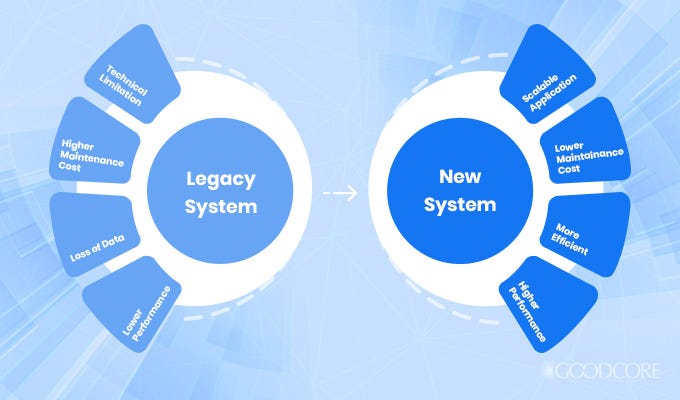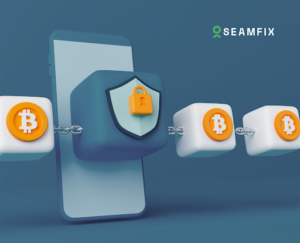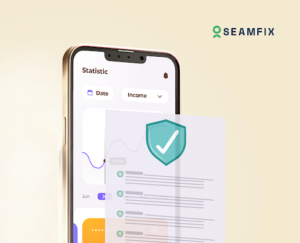Many modern companies have embraced the idea of digital transformation as they implement various strategies and processes to align with the digital age. It is also imperative to note the effect of legacy infrastructure on this digital transformation drive. As it seems impossible for both systems to concurrently exist, there are some little efforts that can be applied to accommodate some legacy infrastructure into a more digital framework.
Some of the major issues companies face when considering upgrading their systems would be the amount of investment to these legacy systems, as there’s this misperception that has to do with digital transformation; which is that legacy systems have to be completely overhauled to welcome a new technology or digital system. This fear makes companies linger on their existing systems.
The reality of overhauling your legacy systems at once is not the only approach in welcoming digital systems. There are other ways one can approach this objective and not feel overwhelmed at the end of the day.
Let’s look at the Concept of Integration

Sometimes, the best way to settle a quarrel would be to meet halfway. The concept of integration happens to be key and will play a critical role in accommodating existing legacy infrastructure in the drive for a digital system.
This approach of finding a middle ground might not necessarily come easy, but it is entirely worth it. In trying to make integration possible, one must ask certain questions about the existing system – like;
Which components within the existing system is obsolete in terms of technological support? For example, there are some software components written in obsolete programming languages which have no more resources supporting them.
If the component has a new digital replacement or needs a custom requirement development process, how much does this component cost in terms of maintenance?
What are the various integration points that exist within the legacy system? It would, therefore, be wise to ensure that the new digital system is designed in such a way to plug in an older system. This design can start from that custom requirement that the last code made available for a plug-in.
The advice is to take it one step at a time. Focus on the minimal components and go up the ladder.

On the other hand, there are known industry best practices in approaching the legacy system digital upgrade like:
Application Program Interfaces (APIs)
API, as of today, is one of the most common enablers in attempting to accommodate legacy systems within a digital transformation journey. APIs can expose functions of the legacy system to outside integration that would sometimes be too complicated or maybe impossible to integrate. This approach somehow allows for extensive flexibility and therefore tends to be an efficient way to reach the end objective.
Service Layers
The concept of service layers in this subject matter refers to a system that acts in the capacity of middleware between existing legacy infrastructure and a new digital system. There are several ways it can work; either translating or transforming information before it is sent to a new digital system by the existing legacy system. This is a very common practice in ensuring legacy systems are easily transformed into a digital system.
Data Access Layers (DALs)
An example of a data access layer in the simplest explanation is a layer of a computer program which provides simplified access to data stored in a persistent storage, such as in an entity relational database. A DAL singles out the database, offering simplified access to data stored there and allowing developers to switch between data stores. It also separates the logical data model from the business layer. DAL can mitigate the requirement to deploy dedicated business intelligence, data intelligence, or artificial solution by replicating or implementing a data solution that allows for data to be accessed in a way that frees the existing system’s resources.
Some challenges you may face

One should be careful to note that the viability of integration is entirely dependent. Integrating onto legacy systems is not always an easy one. One of the serious challenges one may face would be working with a system with obsolete and unmaintained code which can react unpredictably when introduced to updates or new features.
It is advisable to make a move for a replacement of that component to avoid security vulnerabilities on the minimum.
While systems built from scratch may provide the best possible performance, a well-designed digital system is still a vast improvement in most cases. It solves many of the problems presented by legacy systems. Plus, it gives companies an edge over their peers who are too sceptical about a complete overhaul to address their legacy issues at all.
Are you, or your organization passionate about data — collecting it? collating it? verifying it? analyzing it? then you are the kind of people we write for. Follow our publication, and you will gain knowledge on everything data, from the process of easy capture to the end goal of making data-driven decisions. Find out about our company SEAMFIX ,and how we solve big organizational issues with cutting-edge solutions.








